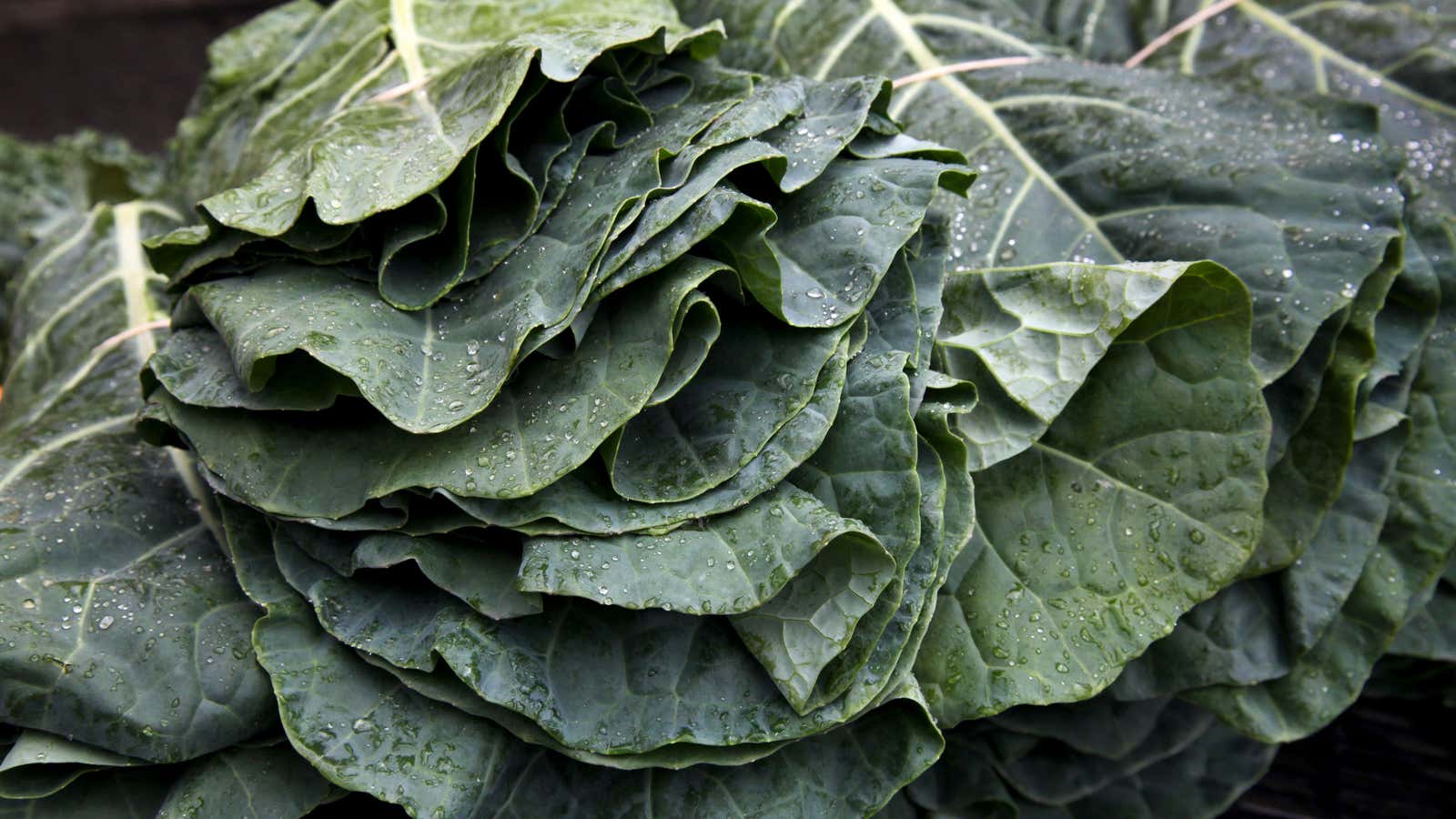In much of the US, especially the South, collard greens and black-eyed peas are the defining components of the New Year’s Day meal. The peas represent good luck and since collards are the same color as money, eating them on Jan. 1 has long been seen as a wish for a prosperous year ahead.
Anyone hoping to load up on collards this year though may need to consider a substitute, like mustard greens or kale. Extreme weather damaged collard crops all over the US this year. In the southeast, hurricane Michael disturbed small collards planted for Thanksgiving and the holiday season. Unusually high levels of precipitation in the southeast and in Texas made the ground too wet for the greens to grow well. In California wildfires prevented fieldworkers from harvesting collards, which already had suffered reduced yields thanks to damage from the Santa Ana winds.
Collards have not been fetishized by foodies in the same way as other hearty greens like kale or chard. But their versatility alone should be enough to get them beyond the heavy, porky associations—or embraced for the rich, delicious possibility of vegetables that can stand up to strong flavors and slow cooking. Collards can go where more delicate leaves, like chard or arugula, cannot, like lasagna, stew, and braises of all kinds. But you might have to wait until the next harvest to start experimenting.
